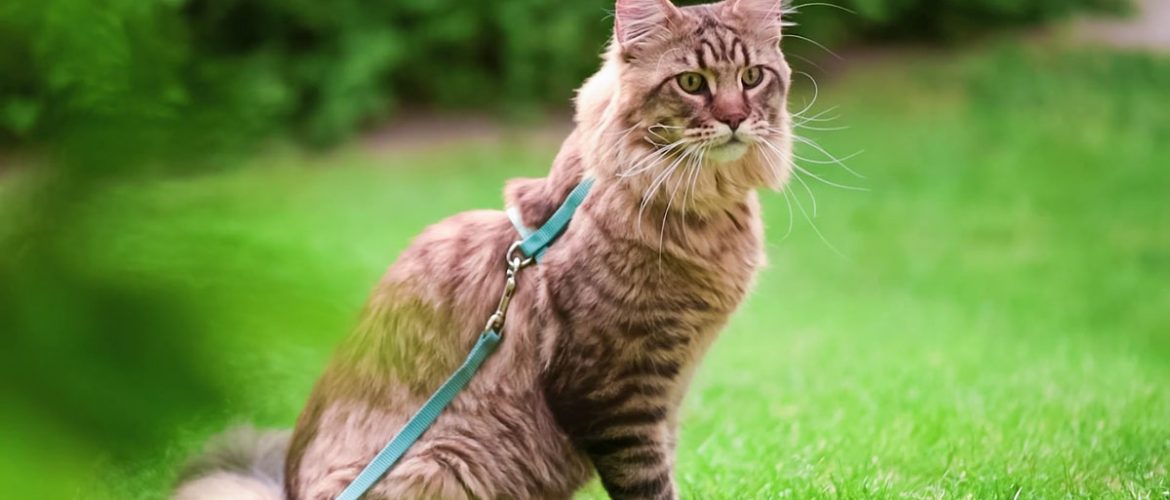In recent years, we have had an influx of cat owners inquiring about training their furry friends. From toilet training to fun tricks that people have been teaching dogs to do for ages, pet owners are embracing the idea that cats can be trained. Did you know that (many) cats can be trained to walk on a leash to safely enjoy the outdoors?
The first step to leash training a cat is to obtain the right equipment. Owners should purchase a leash meant for cats. These are lightweight, but strong. Cats can easily slip out of a collar or injure themselves with a tight collar if startled or determined to chase prey, so a harness is a must. One type of harness, called a “lead harness,” is smaller, with a collar connected to a series of straps that fit around the pet’s body. These harnesses allow for even distribution of pressure when attached to a leash. They tend to be better tolerated by cats than a “walking vest” which is more substantial and fits more like a traditional vest harness that many dog owners use. Your kitty should have proper identification on their harness at all times, just in case. Don’t forget to include your contact information. ID tags are extra important if your cat isn’t microchipped (we recommend chips for all dogs and cats!)
Once you have the gear, take it slow. Show the harness and leash to your cat, then reward them with a small treat when they investigate them. Keep the leash and harness around so the cat gets used to them. Pick up and gently shake the harness and leash every so often so they get used to the sounds they make. Be sure to always reward the kitty with a treat when they investigate or otherwise show tolerance for the walking equipment. The idea is to create a positive association.
After a few days of acclimating to the equipment, it’s time to put the harness on the cat. This should be done indoors with no chance of the pet escaping while outside. Show the harness to the cat, and reward them for being calm. Gently place it on the cat at this time, and continue to praise and give treats. Take the harness off the cat after about 30 seconds, and offer another reward. Repeat this a few times per day. Putting the harness on at feeding or playing time can produce a positive association with it as well.
Once the kitty is used to wearing the harness, attaching the leash is the next step. The first few times the leash is introduced, it should be done indoors and in a room where the cat isn’t likely to get tangled or cause an issue with the leash. Most cats won’t mind it dragging behind them, and may even walk to you if you hold the end and encourage them with treats or toys.
After a few days of practice on the leash indoors, it’s time to head outside. Some cats will be ready to explore, while others will need to be encouraged to step foot outside with praise and treats. Owners should avoid pulling the cat to get it to walk. Simply sit in the grass, and allow the kitty to explore at its own pace. Most cats will enjoy being out in the sunshine, and after a few outdoor adventures, you will know if your cat enjoys it, or prefers to view the world from the window. Visit us at Leo&Lucky’s to get everything you need to take Whiskers for a walk!



